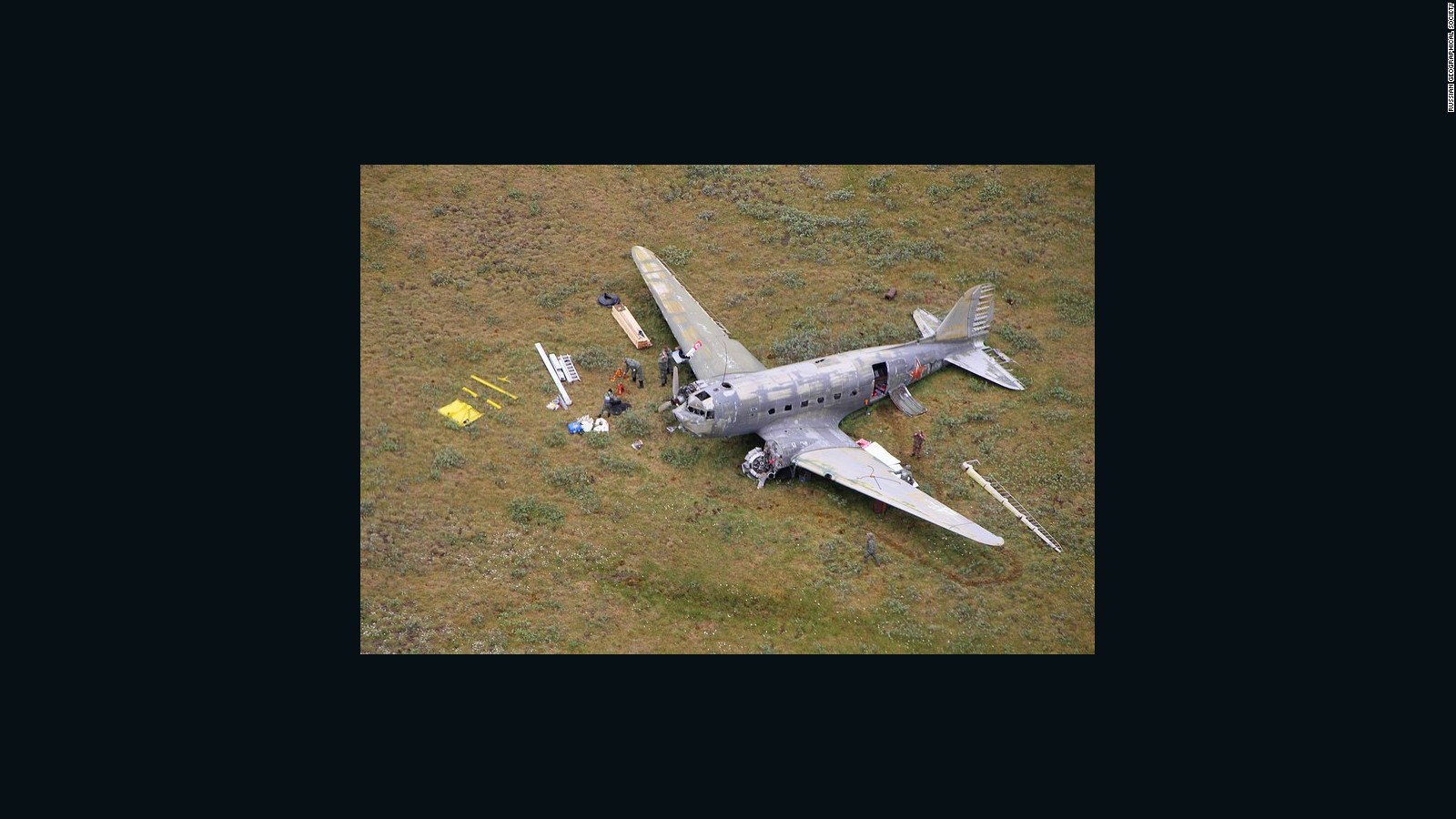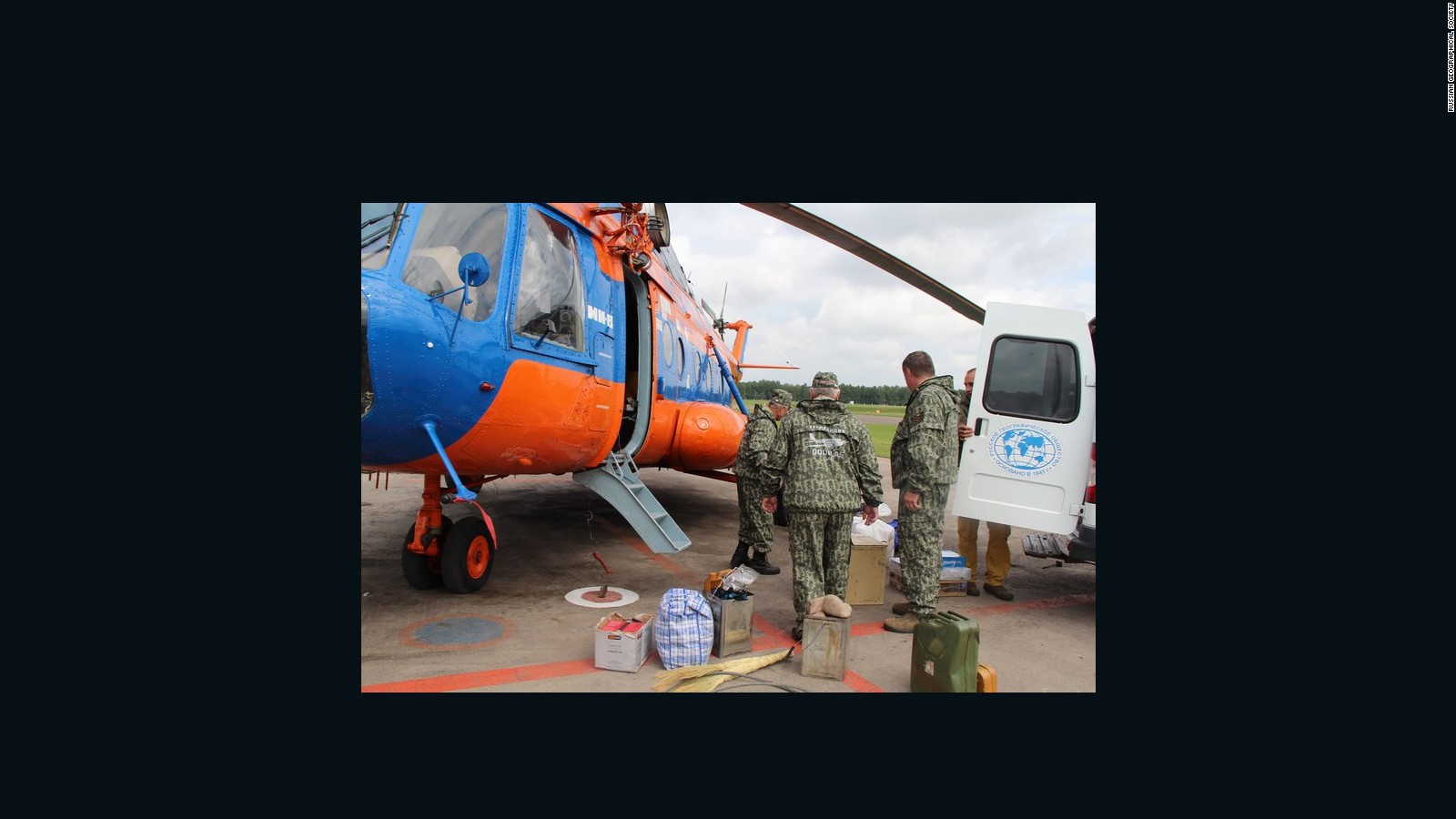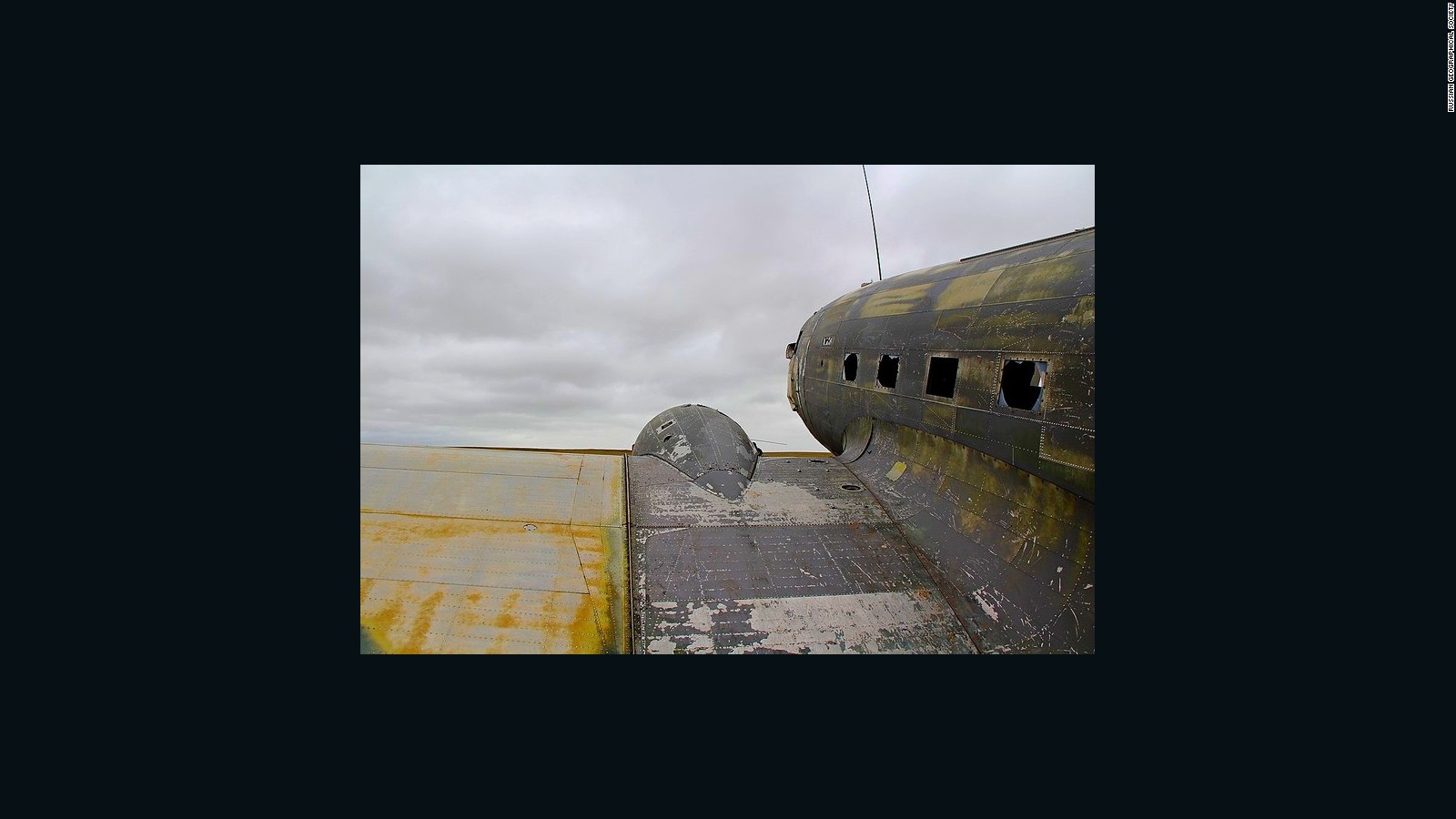Wrecked Douglas C-47 brought in from Siberian cold
By Miquel Ros, for CNN
Updated 0214 GMT (1014 HKT) October 17, 2016
Story highlights
- A Douglas C-47 has been sitting on the Siberian tundra where it crashed for 70 years
- The plane was recently salvaged so that it can be displayed in a Russian museum
(CNN)Half-sunk in the marshy tundra of the Taymyr Peninsula of northern Siberia, not far from the Arctic Circle and several hundred miles away from the nearest human settlement, lay the remains of a 70 year-old American-made aircraft.
How and why did it get there?
In August, an international expedition organized by the Russian Geographical Society set off from the Siberian city of Krasnoyarsk to conduct a rather unique salvage operation, in one of the most remote places on Earth.
Lend-Lease program
To tell this tale we need to travel back in time, to 1943.
The world was at war and American factories were working at full capacity churning out all sorts of aircraft for the Allies.
With the Cold War still a distant prospect and the US and the Soviet Union fighting the same enemy, the Lend-Lease Act guaranteed that a continuous stream of American war material made its way to the Soviets.
This was the case of the C-47 of this story -- manufactured by Douglas in the United States (serial number 42-32892) and handed over to the Soviet Union in Fairbanks, Alaska, on March 12, 1943.
This was one of more than 7,000 aircraft that transited through the ALSIB, the Alaska-Siberia air road, during the war. A supply route that stretched thousands of miles, from the continental United States across Northern Canada to Alaska and, from there, across the Bering Strait all the way to the Siberian city of Krasnoyarsk.
Most of these aircraft then continued their journey onto the front, but this was not to be the case with our C-47. It was instead kept in the rearguard and assigned to fly supply and reconnaissance missions in the Siberian Arctic.
In 1946, without having seen front line action, the aircraft was transferred to civilian duties, flying from Krasnoyarsk to several remote outposts in northern Siberia.
Drama in the tundra

In 1947, this Douglas C-47 crashed on the Siberian tundra.
And this is how we get to April 23, 1947.
On that day, the Douglas C-47 was flying between Kozhevnikova Bay on the Arctic coast and Krasnoyarsk, via the town of Dudinka, with 26 passengers, three of them children.
The left engine malfunctioned in-flight and stopped. The plane carried on with the remaining engine, but after 4 hours in the air, it overheated and stopped too.
The pilot had no other option but to perform an emergency landing in the middle of the wilderness.
No one was hurt, but it soon became clear that chances of rescue were slim.
After three days sheltering in the aircraft, the captain, together with the flight engineer, the radio operator and six of the passengers, decided to attempt a daring trek to find help.
They never made it.
In 1953, local hunters found a body in a bog, some 120 kilometers (74.5 miles) southwest of the Douglas wreck. From documents and other personal items found with the body, it was established that these were indeed the remains of the pilot, Maxim Tyurikov. The other two crew members and six passengers have never been found.
For the remaining crew and passengers the story was to have a happier end.
On May 11, after almost 20 days in the tundra, a Li-2 transport aircraft spotted the wreck and managed to land next to it to pick up the survivors.
All crew and passengers who remained inside the C-47 survived.
Fast-forward 70 years

In August, a team organized by the Russian Geographical Society set out to salvage the C-47.
The Douglas C-47 was left to rust undisturbed for seven decades in the solitude of those Arctic expanses -- providing a rather picturesque and unexpected sight to anyone venturing into those latitudes.
The idea of salvaging the wreck and taking it to a museum had been taking shape at the Russian Geographical Society for some years, but it wasn't until this summer that it was possible to put together the resources and sponsors necessary for such an enterprise.
Finally, in early August, a team of 15 was assembled to travel to the Taymyr Peninsula.
Over the course of five days, the team worked frantically, making the most of the daylight hours, in order to secure the wreck for transportation.
The Douglas was cut in pieces -- fuselage, wings, engines and central section -- so that a Mi-8 helicopter could lift and deposit them on a barge that had been brought to the nearby Pyasina River.
From there they were transported to the town of Dudinka at the mouth of the Yenisei River, from where they could be brought 2,000 kilometers (1,243 miles) upstream to Krasnoyarsk.
The Douglas was in a remarkable state of preservation. Aside from the damage it suffered during the crash landing, it looked almost as if time had stopped in 1947.
Even the landing gear retained some of the air it had been inflated with 70 years ago.
Members of the expedition found a number of items of historical interest onboard, such as American-made radio equipment and cans of corned beef that had also arrived from America during the war years as part of the lend-lease program.
Even more remarkable to see is a sort of diary kept by the survivors during their ordeal, written directly on the inside walls of the fuselage.
It appears that in spite of their rather desperate situation, they managed, somehow, to stay in high spirits. They even celebrated May 1, an important day in the Soviet calendar.
Rather movingly, the diary ends with the May 11 entry: "We have been saved!"
A new home

The Douglas C-47 will eventually go on display at the Museum of the Exploration of the Russian North.
A memorial was erected by the members of the salvage expedition at the site where the old Douglas stood. A plaque explains the events that took place in that remote stretch of tundra nearly 70 years ago.
The late pilot's daughter, Avelina Antsiferova, and relatives of the other crew members traveled to the site to witness its unveiling.
In addition to its status as a historical object, the aircraft itself will serve as a memorial to the pilots who ran the ALSIB route during the war.
This logistical feat was already the object of a commemorative flight in 2015, with American and Russian pilots retracing the historical supply route with vintage aircraft.
Yulia Komissarenko, a representative of the Siberian branch of the Russian Geographical Society, explains what awaits the C-47 in the near future:
"The aircraft will have a place of honor at the future Museum of the Exploration of the Russian North, in Krasnoyarsk," he says. "In the meantime, it will be kept at a facility of the Russian Geographical Society, where specialists will assess the need for further restoration work. The idea is, then, to display it either in a static location or as part of itinerant exhibits".
It will be the only aircraft of this type preserved in a museum anywhere in Russia.



Ingen kommentarer:
Legg inn en kommentar
Merk: Bare medlemmer av denne bloggen kan legge inn en kommentar.